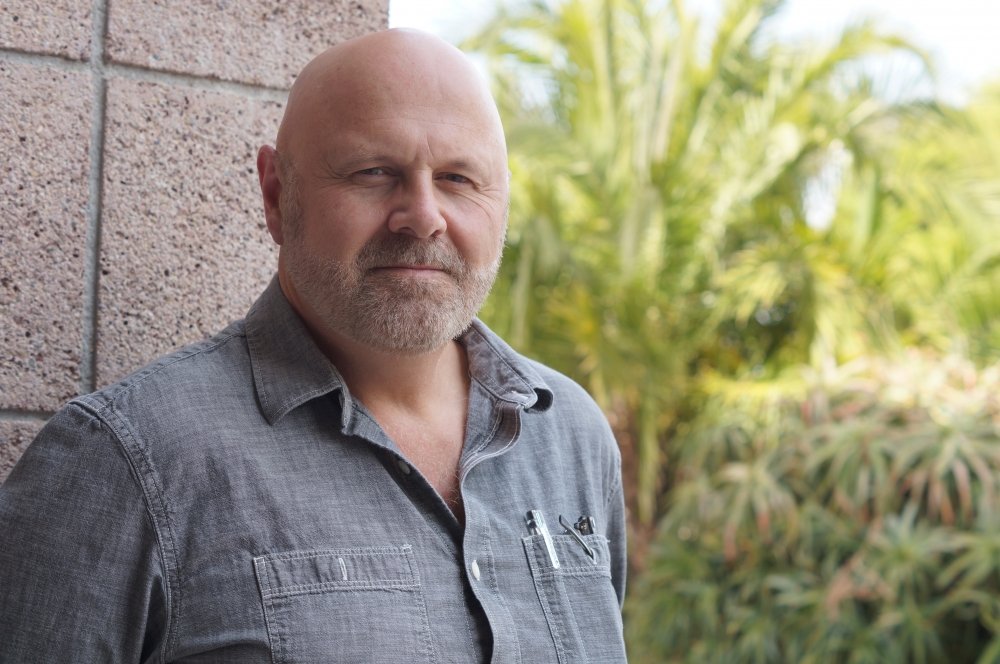By Olivia Candelaria
I have always enjoyed thrifting. Most of my wardrobe consists of pieces from Goodwill, Savers, and other thrift shops. But it wasn’t until I took a course called “Climate Crisis 101” with English professor Kenneth Hiltner that I realized thrifting is more than a fun hobby and a way to find unique clothing at low prices — it’s a great way to reduce carbon footprints.
UC Santa Barbara students at a “Thriftopia” event in October, 2022 at Little Acorn Park in Isla Vista, California. Photo by Olivia Candelaria
I’m among the many UC Santa Barbara students who can be found searching through racks of vintage clothing at Little Acorn Park in Isla Vista in a thrifting frenzy each weekend. Students are not only looking for good deals, but supporting the planet by buying clothing second hand.
Hiltner directs the Environmental Humanities Initiative at UCSB, which focuses on the human relationship to climate change, and teaches students in humanities how to make a major impact in reducing carbon emissions.
His popular climate crisis course offers weekly readings and films that explore different perspectives on climate issues. I learned about the largest contributors to climate change, such as air transportation, the meat industry, overconsumption, and — surprising to me — the fashion industry.
We read articles by climate change deniers in order to gain opposing perspectives, and we watched a documentary about the deadly Camp Fire in Paradise, California, which robbed people of their homes and loved ones. These destructive wildfires are becoming more common as the planet heats up from global warming, research suggests.
Professor of the popular "Climate Crisis" class at UC Santa Barbara, Kenneth Hiltner, who directs the university’s Environmental Humanities Initiative. Photo by Sonia Fernandez
Another documentary film “The True Cost,” exposed the role of fast fashion and the garment workers around the world who make the clothes we wear every day. Fashion expends more energy than aviation. It is responsible for 20 percent of global wastewater and 10 percent of all greenhouse gas emissions caused by humans. It takes about 3000 liters of water just to make one cotton T-shirt, a waste of limited resources.
The fashion industry promotes the American habit of overconsumption. Popular fast-fashion brand, Shein, is a prime example. Its clothing is trendy and low quality, cheap enough that college students can afford to purchase 10 different shirts that will only be worn once. This takes devastatingly vast amounts of resources to produce garments, and when people discard the clothes, they clutter landfills.
Rather than buying brand new clothes and disposing of them when I get bored, I have started to purchase just a few essential basics from secondhand shops. Community clothing events circulate clothes throughout Isla Vista, reducing the need for fast fashion and overconsumption.
Clothing from cheap fast fashion brands ends up in foreign trash dump, such as this one near Mexico City. Photo courtesy of The Donkey Sanctuary.
UCSB students are protecting the planet when they buy high quality clothes that last longer, and thrift secondhand items. This lowers production demand and cuts down on landfill waste. Even when buying used clothing, it is important not to buy more than is actually needed, as Prof. Hiltner’s students now know.
Taking his “Climate Crisis 101” made me aware of what steps I can take personally to help the environment —even just paying attention to what I’m wearing.
Olivia Candelaria is a second-year Statistics and Data Science major at UCSB. She wrote this article for her Writing Program course Digital Journalism.




